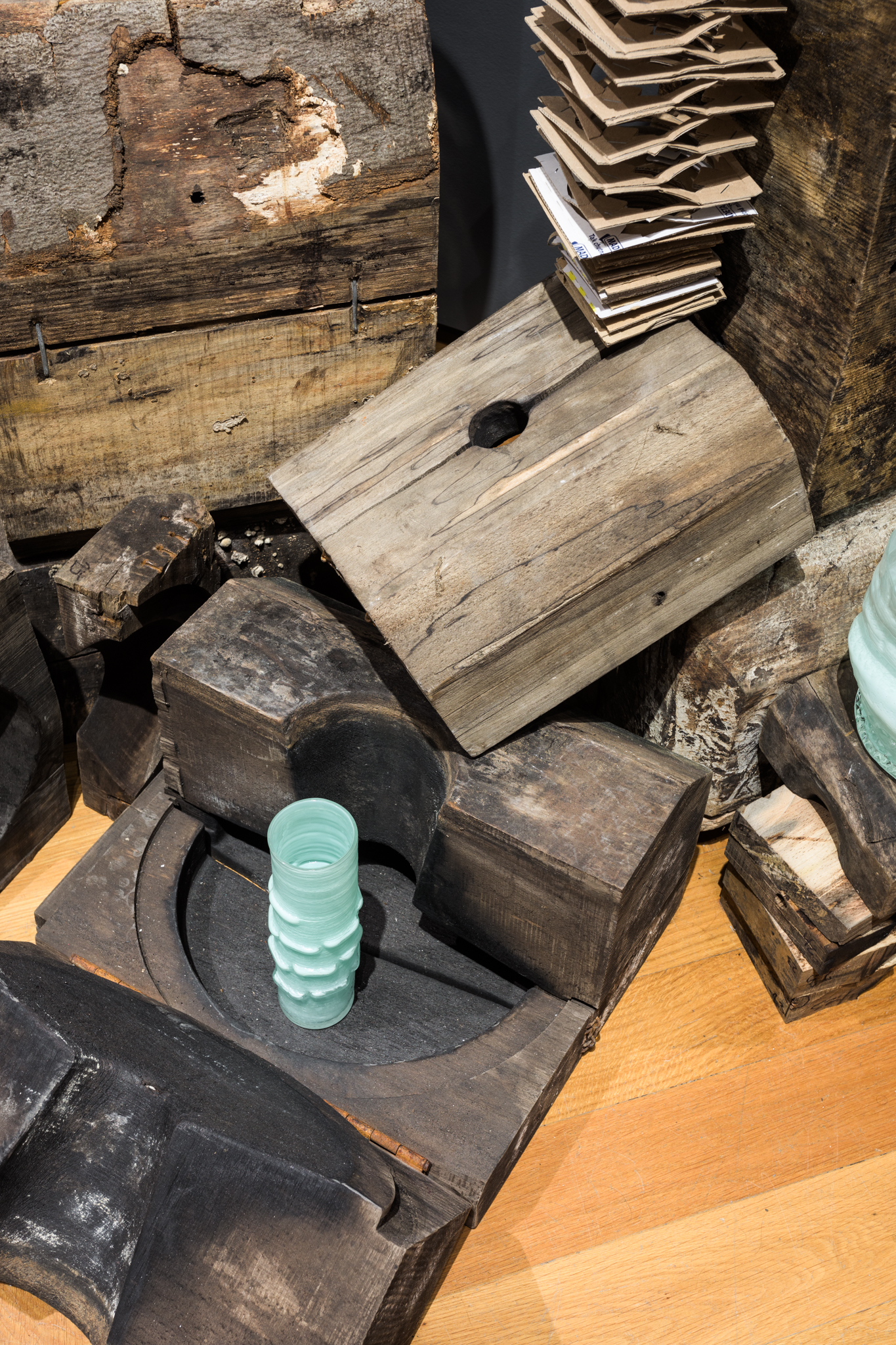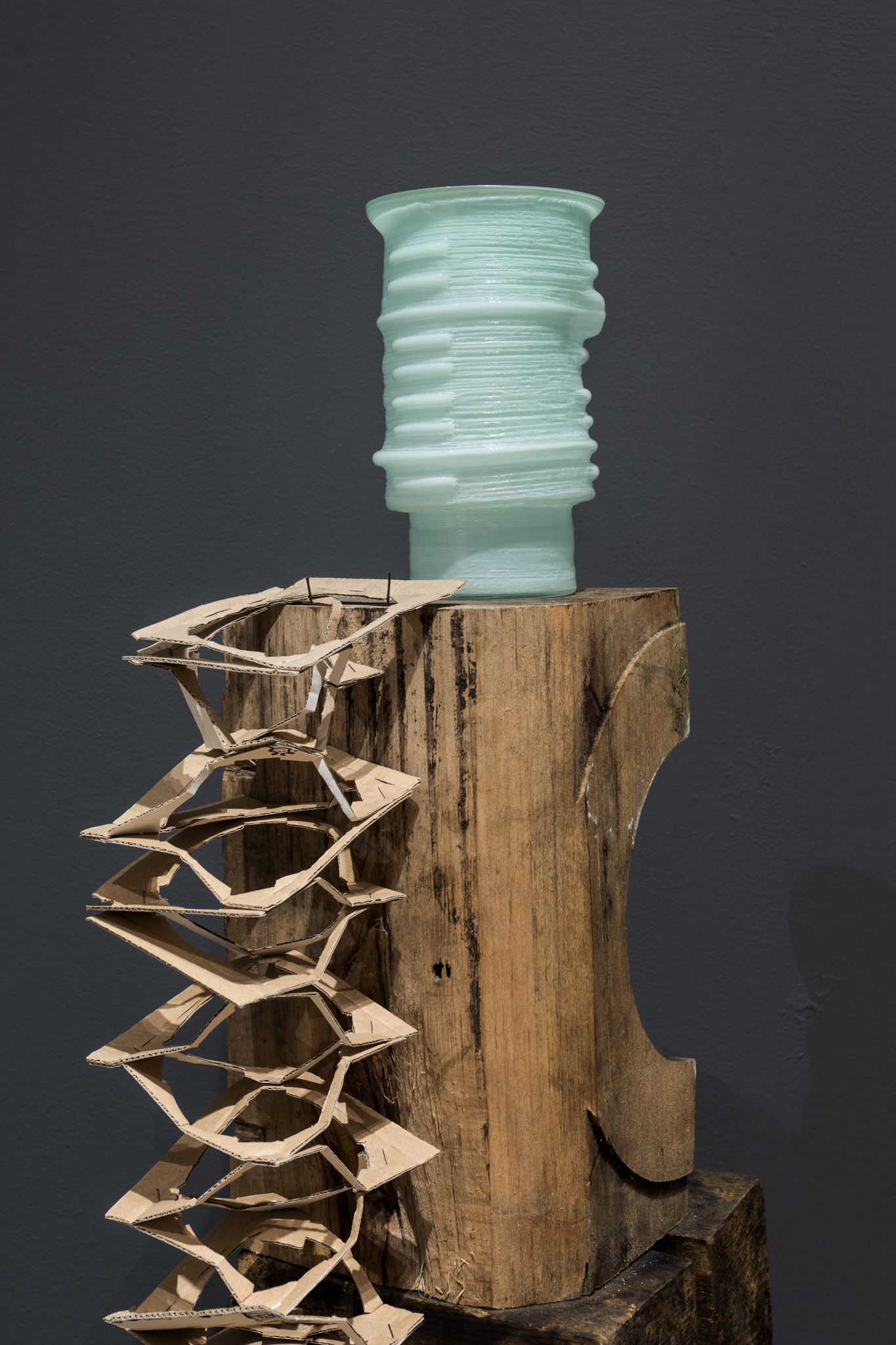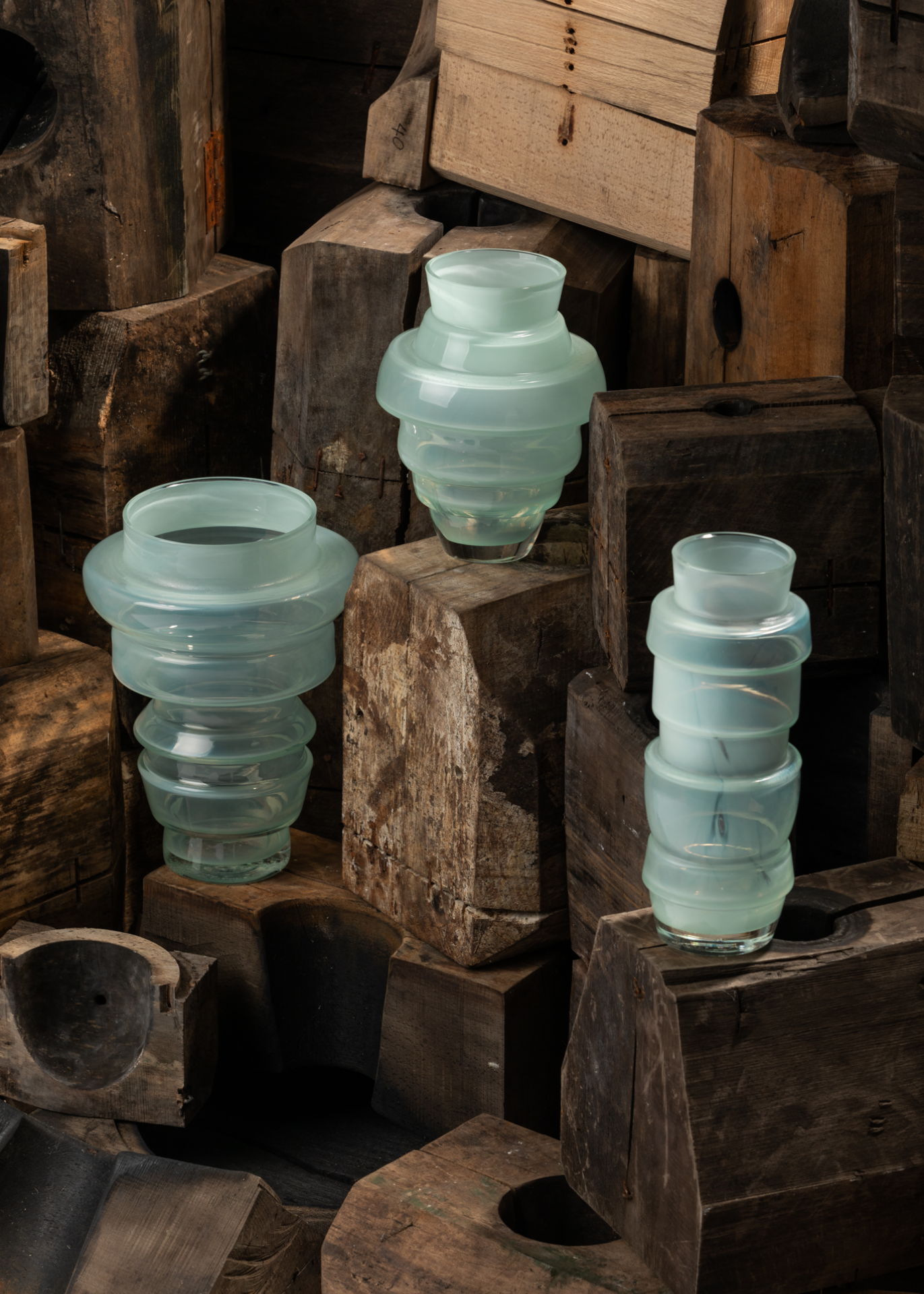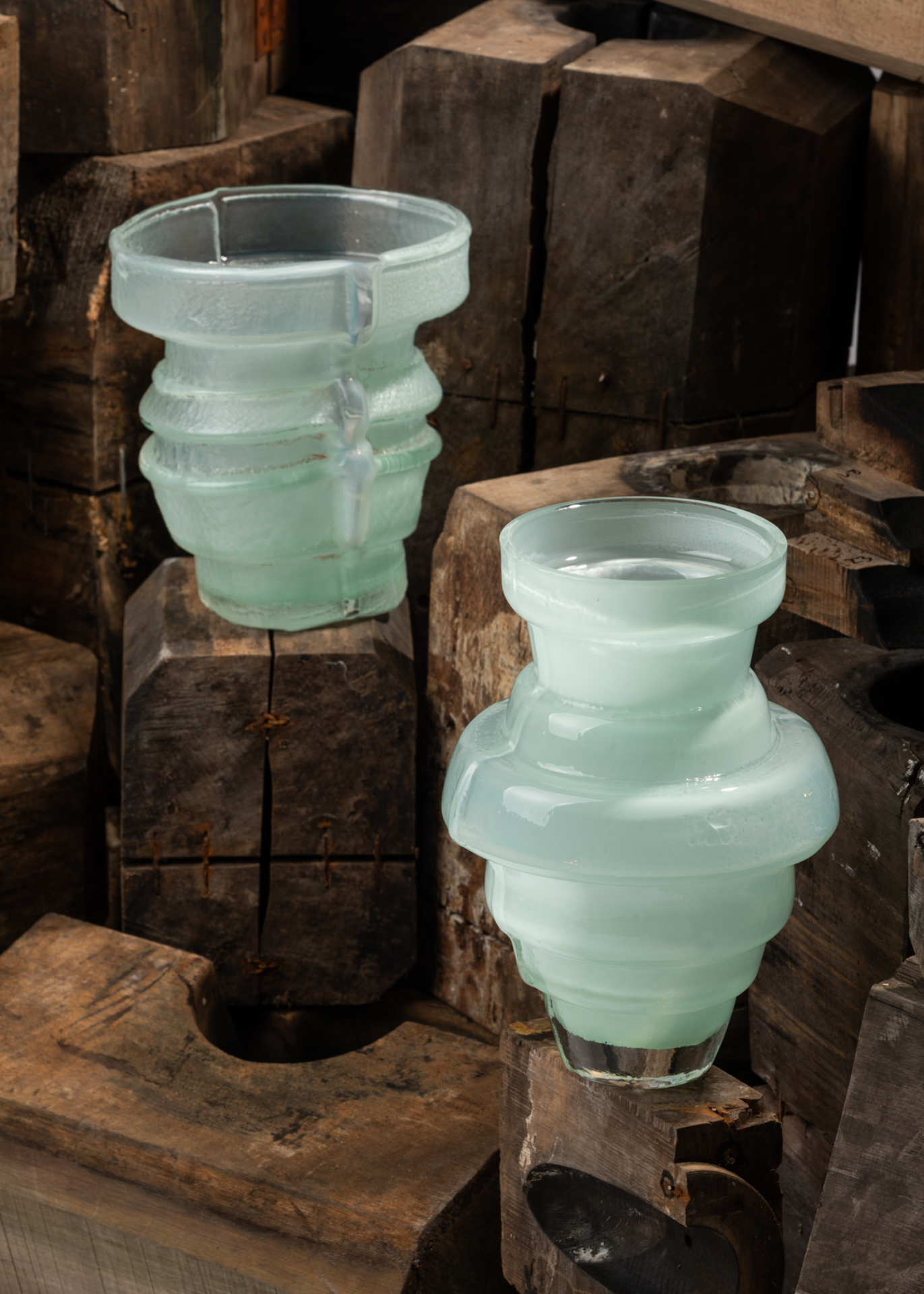LEFTOVERS is a recap.
A dialogue between two seemingly different, but almost identical projects in principle PAP & HOW MANY SHAPES DOES A SHAPE HAVE?. The series of glass objects was created without a design phase, blown into molds intuitively assembled from fragments of found residual materials.
![]()
![]()
![]()
![]()
A dialogue between two seemingly different, but almost identical projects in principle PAP & HOW MANY SHAPES DOES A SHAPE HAVE?. The series of glass objects was created without a design phase, blown into molds intuitively assembled from fragments of found residual materials.




Galleria Rossana Orlandi, Milan – photo Vojtěch Veškrna
The Leftovers collection embodies Hana’s distinctive approach to materials, glass production and their mutual relationship. Her projects are driven by a continuous fascination with process. She deliberately employs materials that are visually overlooked, consumerist and often at the end of their life cycle. Corrugated cardboard molds have become an inherent part of her work, yet she also questions the fate of traditional wooden molds—those that have reached the end of their useful life and lying around in corners. Can mere re-use be enough to make us pay attention to them as new goods?
![]()
![]()
![]()
![]()
![]()
![]()
![]()
![]()








Designblok 2024, Prague –
photo Šimon Roubal
PAP
Design from the blue recycling bin. The input material for PAP series of glass vessels is paper packaging materials. By abstracting shapes from waste papers, corrugated cardboard and paper honeycomb, a new morphology blown into the glass vessel - a much more socially valuable material. At the same time, the leftover cardboard paper trays for transporting dairy products are the subject of the artist's exploration of the aesthetic potential of shapes, patterns and structures that we are more accustomed to overlook on daily basis – she defines the details of the consumption materials as a decor of the contemporary society.
HOW MANY SHAPES DOES A SHAPE HAVE ?
The wooden glass mold is a full-fledged design by itself, it’s designed to produce another design - its value does not lie in its function but in the attractiveness of its internal shape. How do we contemplate about recycling it at the end of its life cycle in this case? By cutting up existing curves and then intuitively stacking them on each other, new shapes are created that inherit fragments of the original designs while creating their own random morphology. Is their re-use enough to provide them with the attention as a new commodity has?




